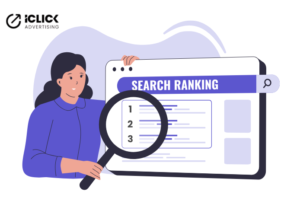These changes have caused major shifts in traffic. Some publishers have reported that they have lost up to 40–50% of their traffic when AI Overviews came out (Source: WSJ, 2025). This is a huge deal for business owners and marketers. You need to understand how Google algorithm updates in 2025 are changing the SEO game if you want to stay visible in search results. Let us break down what has happened, how it affects SEO, and what you can do to stay ahead.
Understanding Google’s Algorithm Updates
Google algorithm decides which website will show up first when you search for something. This changes all the time. In fact, Google makes thousands of tiny updates each year to keep results useful, fast, and safe.
Some updates are small tweaks that you never notice. But some of them are big enough to change millions of search results overnight. Over the years, Google has launched some famous updates that every SEO expert knows about. For example:
- Panda (2011): It targeted thin and low-quality content. Sites with lots of duplicate or weak pages dropped in rankings.
- Penguin (2012): This update is focused on bad backlinks. Websites that bought spammy links to boost rankings were penalized.
- Hummingbird (2013): This has improved how Google understands the meaning behind search queries and not just keywords.
- RankBrain (2015): It added artificial intelligence to help Google better understand what people are really looking for.
- Page Experience Update (2021): This update emphasized page load speed, mobile responsiveness, and interactivity.
- Core Updates (2024): There were four major updates that focused on mobile-friendliness and content quality.
Search engine algorithm updates are even more advanced in 2025. The March and June Core Updates focused on AI signals and tougher spam detection. Google’s SpamBrain system looks for fake backlinks, low-quality AI content, and even deepfake pages.
The goal is simple: Show the best and most trustworthy answers to searchers. If your website is useful, well-written, and clearly shows expertise, then you have more chances to rank well. But shortcuts, spammy tricks, or copying others can affect your rankings fast.
How 2025 Updates Are Affecting SEO

So, how do Google algorithm changes affect SEO today? In 2025, the biggest shifts come from AI Overviews, tougher spam filters, and Google’s push for more helpful content. Here is what’s happening:
-
More Zero-Click Searches:
Google’s AI Overviews show answers directly on the results page. This means fewer people are clicking on websites for simple questions. Recent reports show that sites like Business Insider and Gannett have lost up to 50% of their traffic when AI Overviews rolled out (Source: WSJ, 2025).
-
Higher Spam Detection:
Google’s SpamBrain system is now better at spotting poor-quality AI content, fake backlinks, and pages. Websites that rely on spammy shortcuts are losing rankings fast.
-
E-E-A-T Signals Matter More:
Google rewards sites that clearly show real expertise, author names, and trustworthy information. Pages without strong E-E-A-T (Expertise, Experience, Authoritativeness, Trustworthiness) are dropping lower in results.
-
Content Quality is Key:
Sites with thin, outdated, or duplicate content are being pushed down. The new updates favor original and people-first information.
SEO Challenges You Need to Watch
The latest update has made SEO more unpredictable than ever. If you are not watching for these problems, then you could lose traffic. Here are the biggest challenges you should know:
-
Zero-Click Searches:
More people get answers directly from AI Overviews. This means you lose clicks for easy questions or short snippets. This is one of the biggest ways in which the algorithm changes can affect SEO today.
-
Outdated or Thin Content:
Google’s updates push old, thin, or duplicate pages down in rankings. If you have not updated your content in years, then you could drop fast.
-
Core Web Vitals and UX:
A recent study found that Core Web Vitals and user experience now have up to 20% more impact on rankings (Source: Search Engine Journal, 2025). Slow, cluttered, or mobile-unfriendly sites are losing ground.
-
Local SEO Shifts:
Small local businesses must prove they are real and active. Fake listings, old addresses, or missing business information hurt trust signals.
-
E-E-A-T Signals:
Sites without clear expertise, real author bios, or trusted sources get hit hardest. Building trust is not optional anymore.
How to Protect Your Rankings
You can survive these changes in search engines working if you take the right steps. Smart fixes and good habits can keep your traffic strong, even when Google makes big changes.

Here is how to stay ahead:
-
Track Your Site Closely:
Use tools like Google Search Console and Semrush Sensor. They will help you spot when clicks drop and why.
-
Strengthen Your E-E-A-T:
Add real author bios, credentials, and reviews. Keep your About page clear so visitors can trust you.
-
Write for AI Overviews:
Use short and clear answers on your pages. Add FAQs and Q&A blocks. This makes it easier for Google to pull your content instead of a competitor’s.
-
Fix User Experience Issues:
Test your site’s speed. Make sure your pages look good on mobile and are easy to navigate. Sites that load fast and work well keep users happy and Google notices.
-
Diversify Your Traffic:
Don’t rely only on search engines. Grow your email list, stay active on social media, and build a loyal audience that comes back on its own.
These steps match the biggest SEO trends in 2025 and help you build a site that is ready for anything Google throws your way.
Best SEO Tools for Google Updates
You don’t have to guess what is happening when there is a new update. There are some tools that can help you track changes and fix problems fast.
Here are a few tools every site owner should know:
-
Google Search Console:
It is free and simple. It shows clicks, impressions, and which pages lose or gain traffic.
-
Semrush Sensor:
This tracks how much search results change in your industry. Good for spotting if you got hit or if it is just Google’s dance.
-
Sistrix:
This is one of the best tools to manage SEO after Google updates. It shows your visibility index, helps track competitors, and quickly detects ranking drops.
-
Schema Validator:
You can check if your FAQ or Q&A markup works properly. A good schema helps your pages get featured in AI Overviews.
What is Next for SEO
So, what should you expect in the future? One thing is for sure that Google will keep changing. AI Overviews and zero-click searches are not going away. In fact, they will keep expanding in 2025 and beyond.
Some countries like the UK are already investigating how AI Overviews impact other sites and publishers (Source: WSJ, 2025). This could mean that there can be new rules or more transparency about how search results work.
Your best bet? Follow the core SEO trends 2025:
- Keep your content original and helpful.
- Show real expertise and trust signals.
- Keep your site fast and easy to use.
- Diversify where your traffic comes from.
Conclusion: Stay Ahead with Smart SEO
The Google algorithm updates 2025 remind us that search never stays the same for long. One day you are on page one, and the next day you are nowhere. But when you focus on trust, helpful content, and a good user experience, then you can handle anything Google comes up with.
Keep an eye on updates. Use the best tools for the updates. Follow smart trends like E-E-A-T and fast-loading pages. And don’t rely on quick tricks because they never last.
At iClick Advertising, we specialize in helping businesses navigate these shifts by combining advanced SEO with strategic Pay-Per-Click (PPC) campaigns. While SEO builds long-term authority, PPC provides immediate visibility and traffic, which allows you to maintain a strong presence even with ranking fluctuations.
Let us talk if you want to stay visible and strong without stressing over further updates.





